Google Nexus 4 Review - Google's new Flagship
by Brian Klug on November 13, 2012 8:45 AM EST- Posted in
- Smartphones
- LG
- Android
- Mobile
- APQ8064
- Nexus 4
- Android 4.2
- MDM9215
I usually take apart smartphones I’m sampled just because I like knowing what’s inside, even if I already know the majority of component choices through other purely software means. In the case of the Nexus 4 this was also motivated by my desire to find out whether it would be possible to replace the battery easily and also to get a look at some of the RF components for cellular.
Taking apart the Nexus 4 is surprisingly simple, so much so that I’ve taken my Nexus 4 review unit apart fully, twice. There are two Torx T–4 screws at the bottom which come out, after which the back cage pulls off after you use a plastic separator tool to get past some clips holding it on. If you’re interested in replacing the battery you can pretty much stop here, there are two screws holding the battery connector onto the mainboard, and the battery is held in place with a square outline of double sided tape. The back side of the case has many gold pads for antennas, NFC, and the inductive charging coils.
Further disassembly involves removing the plastic covering the PCB, then a few screws and the mainboard lifts out. Construction here is very standard fare for smartphones lately, with an L shaped mainboard and battery sitting in the cavity next to it.
After you get the PCB out things are very easy to identify. I popped the EMI cans off wherever possible as well.
First off on the backside we can see the DRAM PoP atop APQ8064, which in this case is Samsung 2x32-bit LPDDR2–1066, 2GB courtesy of 4 x 512MB die at 1.2V. Below that is the Qualcomm MDM9215 baseband, to the left we can see the baseband PMIC (PM8821), and to the left of that the PMIC for APQ8064, PM8921.
On the long underside of the mainboard we can see the TI BQ51051b wireless power Li-Ion charger receiver I mentioned earlier, and above it Qualcomm’s WCD9310 Audio codec in a sea of epoxy. Inbetween those two is a BCM20793 NFC controller instead of the ubiquitous NXP PN544 part.
My main goal when taking apart the Nexus 4 was nailing down what power amplifiers and RF architecture the phone had, and under the EMI cans on this side are a few relevant parts.
There are three Avago power amplifiers, and an RFMD switch at left. We can see Avago A5505 (Band 5 - UMTS), A5704 (Band 4 - LTE/UMTS), A5702 (Band 2 - LTE/UMTS), and at far left an RFMD 1156 single pole 5 throw switch hiding under a lip of the EMI can.
Flipping the PCB over and removing the other large EMI can reveals more parts of the puzzle. I can identify an Avago ACPM–7251 (Band 1, 5, Quad band GSM/EGE) power amplifier, and another package near it marked “GFD49” which is probably another switch just next to the antenna feed for the bottom transmit antenna.
Nexus 4 also has the latest and greatest Qualcomm transceiver onboard, WTR1605L, which we’re going to talk at length about in another piece. It’s actually somewhat surprising to see the latest and greatest here considering the Nexus 4 doesn’t include LTE support, even though it does have the hardware for it on bands 4, 2, and 1 in theory.
Also under this can is the SlimPort ANX7808 which enables HDMI, VGA, DVI, or DisplayPort out on the Nexus 4 instead of the USB-MHL that we’ve been seeing getting adoption pretty rapidly. This is actually an interesting choice for the Nexus 4 considering again the relative ubiquity of MHL. I don’t have any SlimPort cables or dongles so I can’t test it first hand, but there’s the transmit package on the PCB that enables it.
I can also identify an InvenSense MPU–6050 six axis gyro and accelerometer at the very top of the PCB.
I couldn’t get the can off of what appears to be the eMMC (the only remaining large package), we’ll have to see if anyone else wants to do some destructive digging to get that one. Finally the Nexus 4 also has a linear actuator vibrator which you can see in the FCC teardown photos.









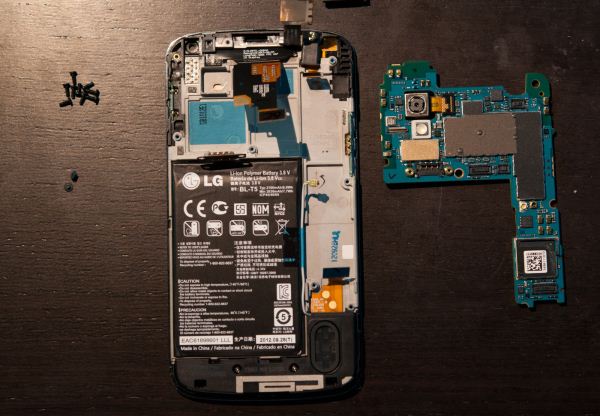
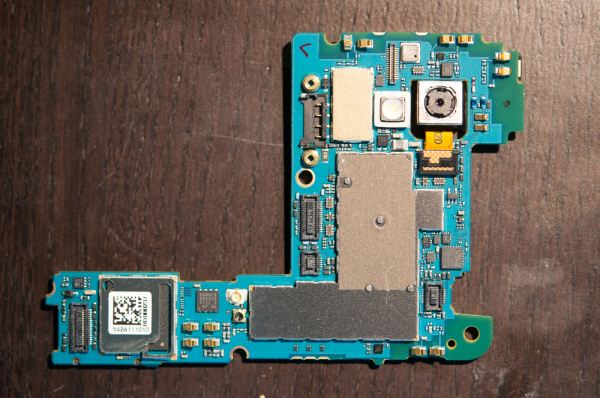
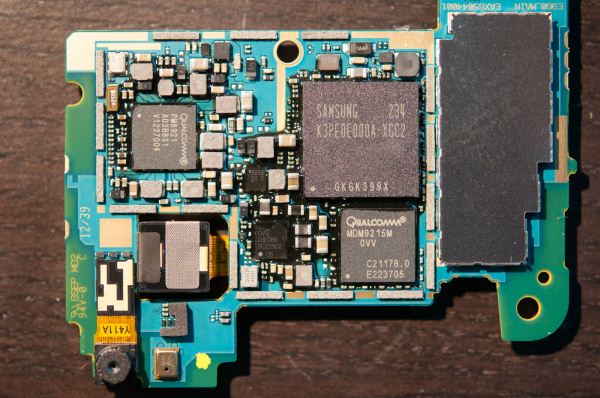
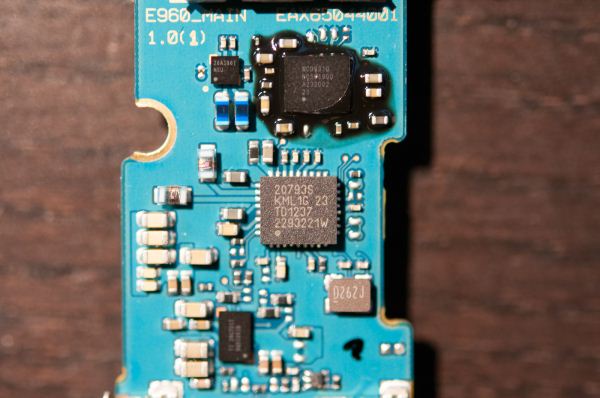
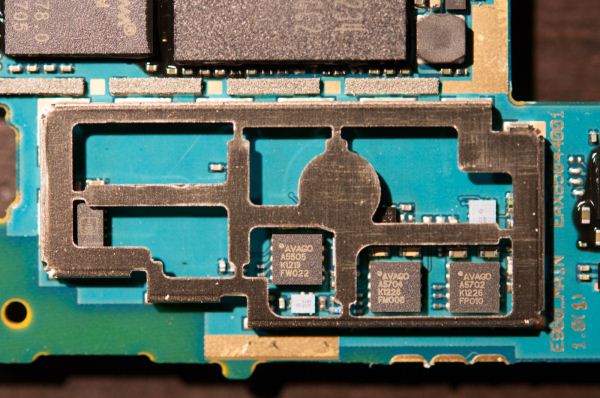
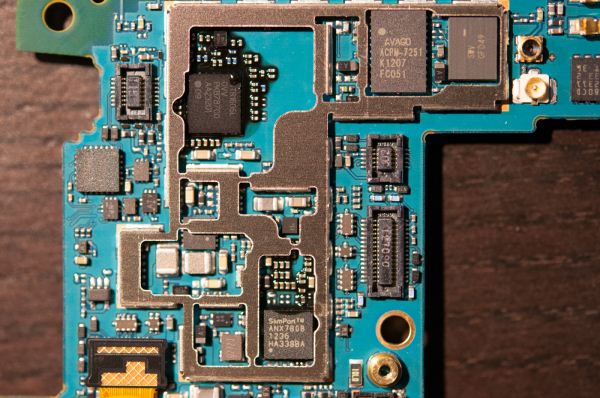
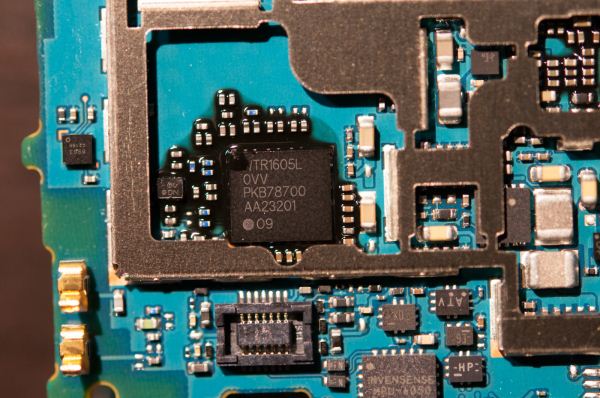
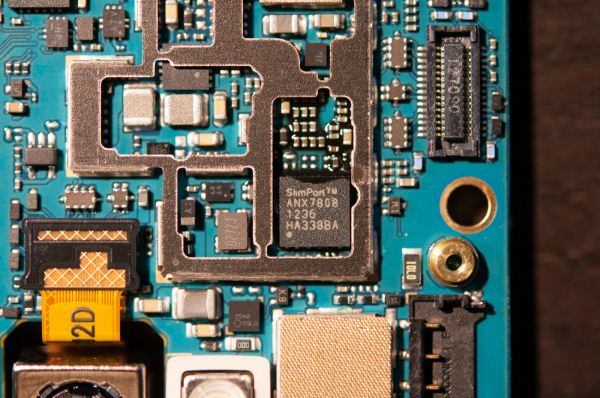
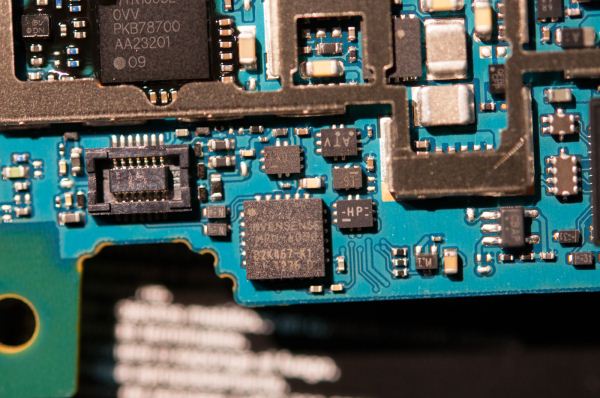
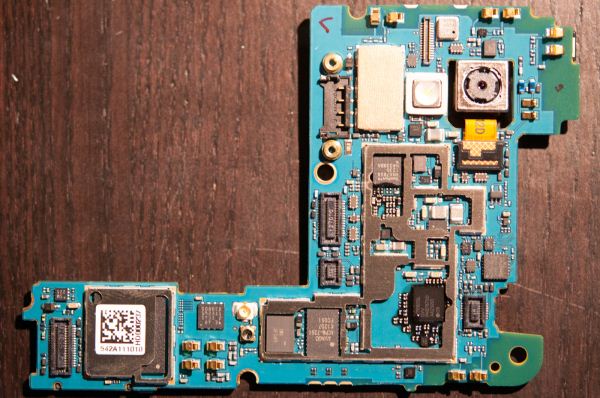








188 Comments
View All Comments
Impulses - Tuesday, November 13, 2012 - link
There's an app a ton of people are using with the N7 sans root that allows them to import or even stream video from USB devices using OTG, it's a pretty solid workaround for those that would rather avoid rooting.thesavvymage - Wednesday, November 14, 2012 - link
know what this app is called by any chance? I havent heard of any way for them to read off a usb without rootingFreedomuser - Wednesday, November 14, 2012 - link
The none-root app called Nexus Media Importer. There is a thread in accessories in xda for DIY USB OTG to microSD is great. Check it out.andybryant - Wednesday, November 14, 2012 - link
I guess this is the threadhttp://forum.xda-developers.com/showthread.php?t=1...
Sounds like an opportunity for a kickstarter.
https://play.google.com/store/apps/details?id=com....
twtech - Tuesday, November 13, 2012 - link
I would be tempted to try this phone, except for the battery life. That could probably be mitigated somewhat by buying a few charging mats, but still I don't think I could ever go back from having all-day no hassle battery life to having to watch the battery meter again to make sure that my phone isn't going to turn off.Also, the glass back sounds a bit dangerous, but it's a relief to hear you dropped it a few times with no ill-effects.
Rits - Tuesday, November 13, 2012 - link
Brian, let me thank you for this fantastic review. Its probably going to be the definitive review of the Nexus 4. The level of detail just made me smile! And thanks for the audio fidelity part (graph missing?) and teaming up with François was just what I needed. I'll await his (or your) detailed analysis of that part.Keep up the great work. :)
wffurr - Tuesday, November 13, 2012 - link
What an incredibly thorough review. This is the first Anandtech smartphone review I have read, and I am seriously impressed. Thank you for all your hard work.One thing that I would like to see included is the brightness, black level, and contrast measurements for the Galaxy Nexus. Are they not included because it's an AMOLED display?
That's my current phone, and I also think it's instructive to see the improvement in the Nexus line against its direct predecessor.
MadMan007 - Tuesday, November 13, 2012 - link
Out of those, brightness is the only thing you can meaningfully measure for AMOLED. Black is 0 and contrast is therefore 'infinite.' Note that the Galaxy Nexus is listed on the brightness chart.Guspaz - Tuesday, November 13, 2012 - link
I'm confused. The phone seems to have horrible performance, making it one of the slowest Android phones in the benchmarks (doesn't matter to users why the browser benchmarks are so bad, only that they are) and terrible overheating problem, but it's "the phone to get?"It sounds more like a critically flawed product that should be avoided at all costs. There are plenty of other Android phones that don't have performance or overheating problems.
uhuznaa - Tuesday, November 13, 2012 - link
It's really cheap, though. Don't underestimate the draw of being able to afford it without much thinking. Worked great with the Nexus 7 too.Personally I'm really pissed off by the battery life despite a huge battery, this thing is quite a brick.